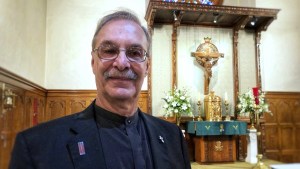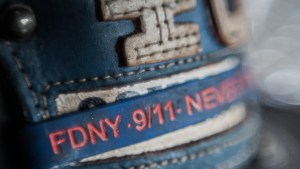I was heading into New York City for work on September 11, 2001, when the people on my train started crowding the windows and pointing to the North Tower of the World Trade Center. There was smoke, but from my moving vantage point in New Jersey it was impossible to tell what was going on. Certainly, I did not suspect that an act of terrorism was occurring that would alter history.
My memories of that day remain vivid, as I suppose they do for many people, especially for the survivors and those who lost loved ones. I can still remember the silent, intent anxiety of one of my co-workers whose mother worked at the World Trade Center as a cleaning lady — and his relieved face when she called him to let him know she was okay. She had been late for work that day.
I can recall almost verbatim a conversation with my wife, who had gone to Brazil with my son to visit her mother. She had been frantically trying to reach me. Anxious that there would be more planes crashing into the city, she wanted me to leave the skyscraper where I worked. It was not an irrational fear.
Many of us had had the same thought. The Twin Towers had both fallen by then, the Pentagon had been hit, and a plane had gone down in Pennsylvania. Were there more attacks coming? Not that there was anywhere “safe” to go. The city was basically shut down.
A packed cathedral
An hour or so later, I decided to go to St. Patrick’s Cathedral to pray. Even though the cathedral was a potential target, it was packed. People just needed to pray with other believers and go to Mass. There were many non-Catholics in church that day.
Towards mid-afternoon, waves of downtown workers began to appear, slogging uptown. (I worked on West 57th Street back then.) The subways were shut down, so they had to walk home from their jobs on Wall Street, which was now a hellscape. Most of them were covered in soot, and they wore blank expressions, too profoundly shaken to feel emotion.
What I remember most of all, however, were the days immediately after 9/11. As rescue workers went to work trying to find survivors, the rest of the city was in limbo. People went into work if they could, but nothing got done. “What the —— does all this matter?” I heard one woman scream at her boss. It was the first time that many of my co-workers ever stopped to examine their lives seriously and question the meaning of things. A few of them turned to God in search of answers.
Hundreds of makeshift memorials
There is one memory that I have that is especially vivid and that changed me. A day or two after 9/11, all around New York, hundreds of little installations began to spring up for those who were missing. There were flyers with photographs of the missing and little notes with prayers and messages, flowers, and many, many candles. Though I did not know any of those people, I recognized that I was connected to them and to those who were worrying for them. Desperate hope turned to grief in the days that followed; the memorials remained.
Similar memorials sprang up in D.C., Pennsylvania, and elsewhere. As the casualty numbers were released, those informal memorials made it impossible for the numbers to remain abstractions. They made me confront the terrible truth of all the individual souls behind the statistics.
Eventually time and the elements took their toll, and the small memorials disappeared, to be replaced in the coming months and years by more permanent installations. It would take ten years to complete the extraordinary 9/11 Memorial at the World Trade Center site. The Pentagon Memorial opened in 2008, and the permanent Flight 93 Memorial in Pennsylvania in 2011. Before that, many towns in the New York metropolitan area and beyond had erected their own more modest memorials for local victims of the attacks.
One feature that all these memorials have in common is their lists of names. At this time of year, you may notice a rose or a prayer card being left next to them, left by someone who will never forget because it is impossible for them to forget.
A duty to remember
For me, these newer monuments of stone, steel, and light, no matter how grand or beautiful, can never really make the same impact as those initial little makeshift memorials that were put together by the anxious and heartbroken relatives and friends of the lost. Nevertheless, these permanent memorials perform the necessary task of honoring and remembering the victims and those who tried to protect and save them, preserving their names and the memories of their lives for future generations.
The task of remembering especially falls to those of us who were present while we still walk the Earth, even if, like me, you only experienced the events in a peripheral way. As I told one of my colleagues the other day, each of us has a responsibility to pass on our memories, even if we feel unworthy or not up to the task — hence this poor scattered essay.
Click on the PHOTO GALLERY below to view some of the permanent memorials that have been erected for the victims of 9/11.




